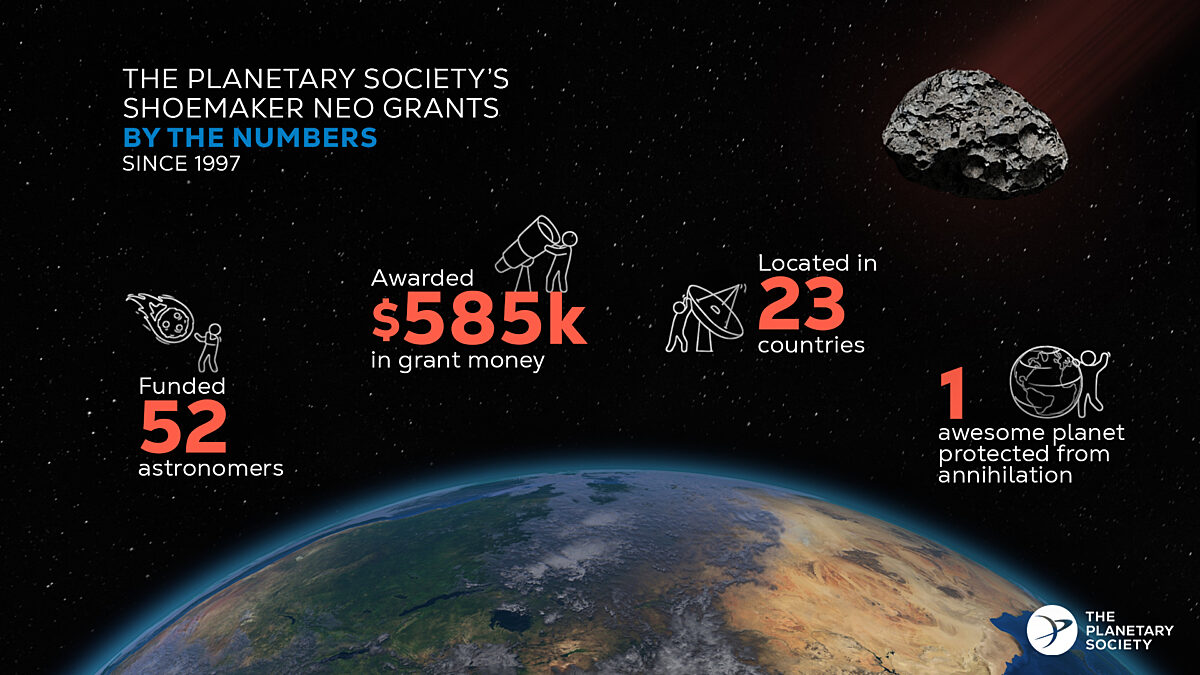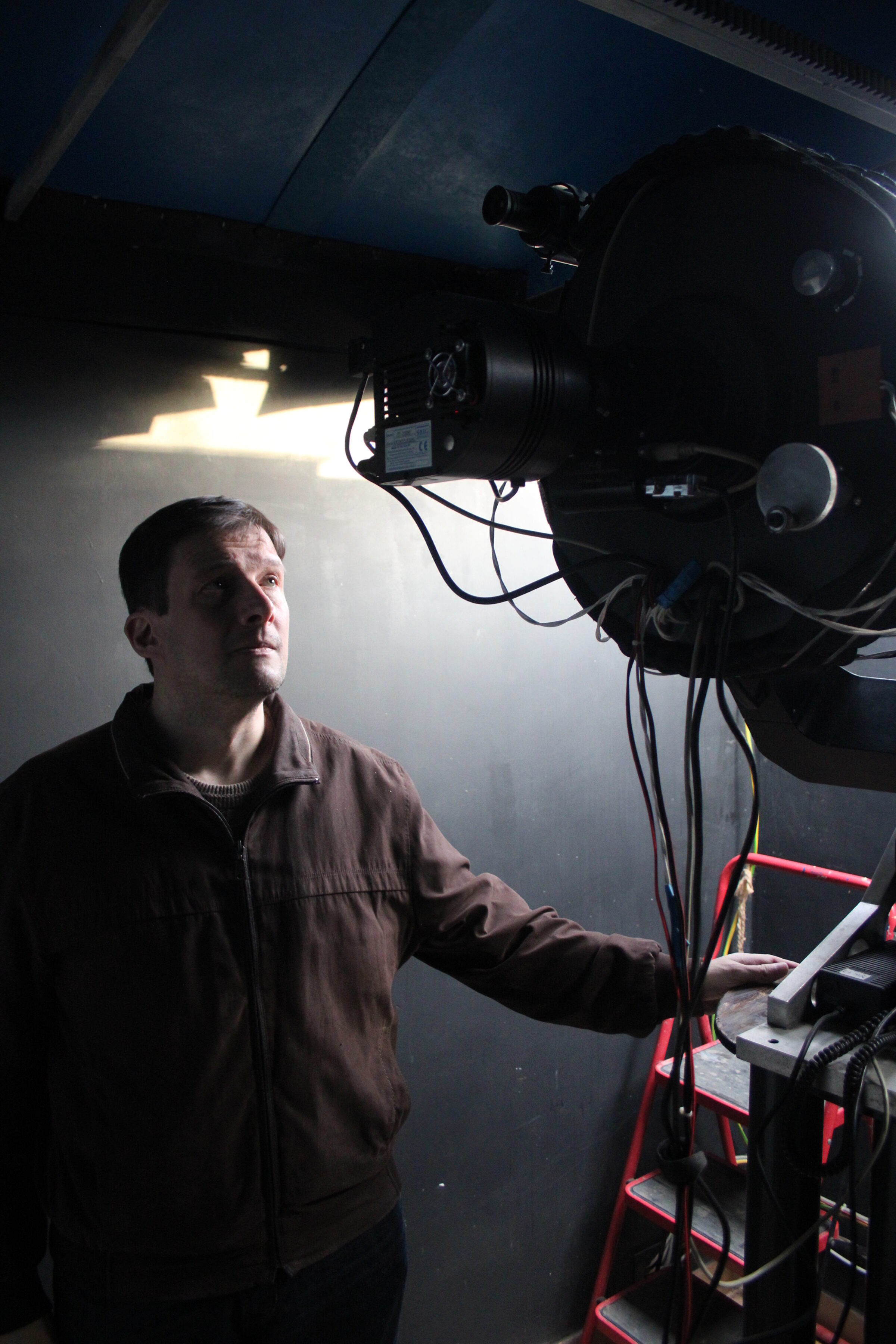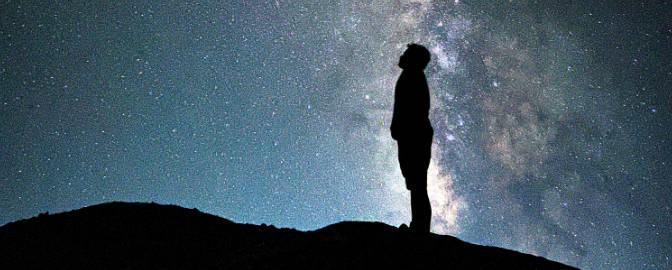Kate Howells • Jun 27, 2024
2024 Shoemaker NEO Grant winner updates
Every two years, The Planetary Society awards a series of grants to asteroid hunters through our Shoemaker Near-Earth Object (NEO) Grant program. Grant recipients are typically very advanced amateur astronomers from around the world who track, characterize, and discover near-Earth objects.
Since the Shoemaker program began in 1997, grantees have submitted hundreds of thousands of asteroid observations to the International Astronomical Union’s Minor Planet Center, a clearinghouse for the world’s asteroid observations. Below is a sampling of updates and photos from some of our recent grant recipients.

From Gary Hug and the Farpoint Observatory's FAST program:
“The Shoemaker NEO grants have significantly enhanced our FAST program. We replaced the historic 0.7-meter ‘Pitt’ mirror with a faster f/3 mirror, improving our near-Earth object tracking capabilities. The original mirror, restored by Clyde Tombaugh, was returned to Kansas University for display. Our new setup, funded by the Mount Cuba Astronomical Foundation and The Planetary Society's Shoemaker award, now offers wider field-of-view imaging.”
From Alain Maury of the The MAPS project (Maury, Mari, Attard, Parrott, Signoret) in Chile:
“The MAPS program has discovered 216 NEOs in total. Through the Shoemaker NEO Grant program, they were able to purchase four cameras, two focus motors, and adapters to mount the telescopes. Along with other adaptations, they can now get eight telescopes pointed at the sky to increase their discovery rate.”

From Grzegorz Duszanowicz in Sweden:
“Thanks to the grant I received from you last year, I was able to launch an additional telescope, which I also use to look for NEOs. It was purchased and installed with your funds at the observatory in Namibia in September last year. The advantage of this new instrument is that it doubles the majority of searches each night and that on windy nights it can still observe because it is less susceptible to wind. The equipment works practically every possible (observable) night.”
From Massimo Calabresi of the Associazione Romana Astrofili in Italy:
“The prize allowed the Municipality of Frasso Sabino, owner of the observatory, to receive funds from the Regional Government of the Lazio Region for renovation works of the building and the replacement of the sliding roof. The observatory was built in 1992 and needed maintenance work on its structure. The works are currently underway and should be completed in July 2024. As part of these works, the remote control of the telescope is also planned to increase the productivity of the observatory. This activity is carried out entirely by ARA’s technician members.”
From Miguel Sanchez Gonzalez of Spain:
“During the last months, we’ve been carrying out star occultations by asteroids, using the equipment acquired thanks to the Shoemaker NEO grant. These occultations can provide accurate information about the asteroid's size and orbit. One of the last successful occultations was able to improve knowledge of the physical properties of Centaur (447178) 2005 RO43, an object quite far from us and too dim even for professional telescopes. The occultation method is essential to explore these kinds of asteroids without the need to send probes to them.”

From Gonzalo Fornas of Spain:
“Thanks to the new camera, we’ve reported more measurements of NEOs to the Minor Planet Center, we're on the alert list for near-Earth asteroids "Meerkat" by the ESA, we’ve measured light curves of asteroids and calculate their poles, we’ve published in the Minor Planet Bulletin, and we’ve collaborated on the Exoclock project by measuring planetary transits.”
From Andrea Soffiantini of the Serafino Zani Astronomical Observatory in Italy:
“The new camera was delivered in September and, following setup and calibration challenges along with adverse weather conditions, we started astrometric measurements in November. Comparative analysis of data spanning November 2023 to April 2024 against the corresponding period in the previous year reveals improvements in measuring fast-moving asteroids and those listed in the Minor Planet Electronic Circulars. The share of fast-moving asteroids increased from 24% to 29%, and that of those listed in the Circulars increased from 5% to 10% against the total number of measured NEOs.”
From Cristovao Jacques of SONEAR (Southern Observatory for Near Earth Asteroids Research) Observatory in Brazil:
“In 2021 we were awarded the Shoemaker Grant which allowed us to purchase two items to upgrade our observation program. Since the start of use of the equipment, both the new camera and the synthetic tracking technique using the GPU have allowed us, in addition to the more intense follow-up, to discover 12 NEOs.”
From Florent Losse of France:
“The observatory has followed up more than 700 newly discovered NEOs since January 2023, making it one of the most prolific. This period has had some highlights, such as my second NEO discovery (2023 DE3) and the tracking of impactors 2023 CX1 and 2024 BX1 just minutes after their discovery by K88. These hit the Earth's atmosphere over France and Germany respectively without any damage and provided valuable fragments found after the impact. Thanks again, these things would have been much more difficult or impossible without the help of The Planetary Society.”


 Explore Worlds
Explore Worlds Find Life
Find Life Defend Earth
Defend Earth

